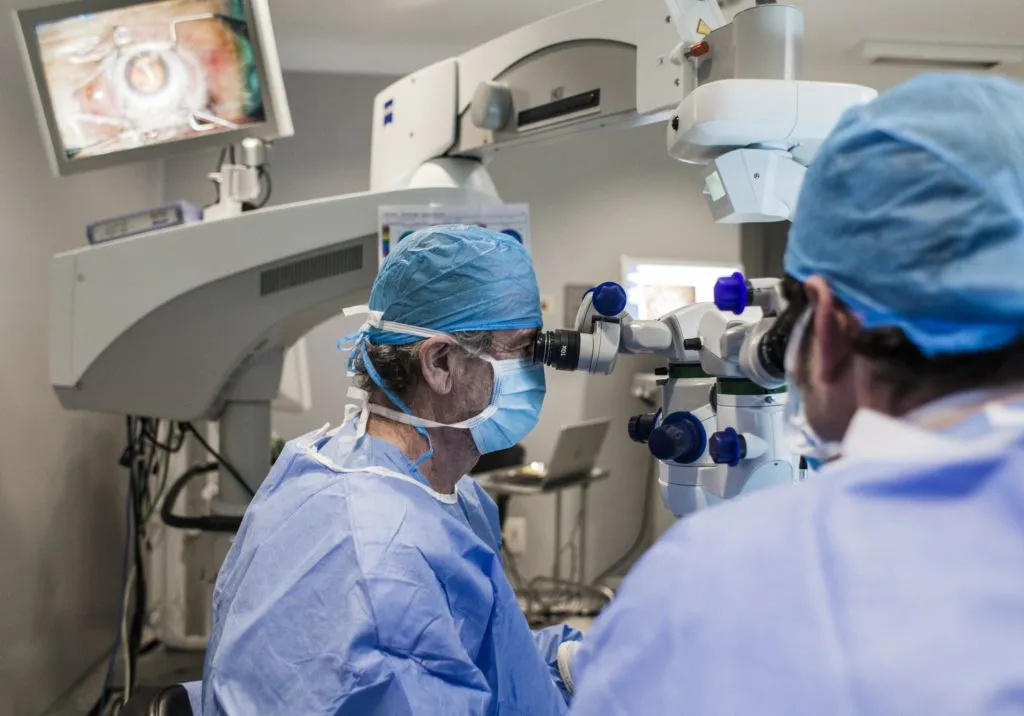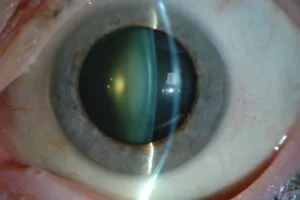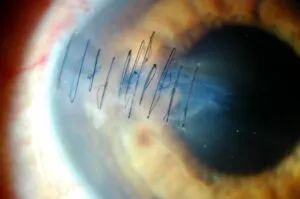Treatments
Cataract surgery

What is cataract surgery?
The only solution to treat the loss of transparency of the lens is surgery to replace this natural lens of the eye with an artificial intraocular lens that allows you to see clearly again. This is the end of cataract surgery, the most widely performed eye surgery, which is carried out at the Miranza clinics by expert ophthalmologists who are pioneering in the use of the latest techniques and technologies for this type of surgery.
This is the case of phacoemulsification, which was pioneered in Spain by specialists from our team and is currently the most widespread procedure. It consists of fragmenting and aspirating the cataract using ultrasound, so that we can extract it from the eye through a small incision in the cornea, which is also used to insert the intraocular lens in the place occupied by the crystalline lens.
Increasingly reducing the size of this incision (to less than 1.5 mm) is one of the main advances in cataract surgery, for which we have made a commitment at the centres of our group. In addition to having the skill of highly experienced surgeons, technological innovation – through the introduction of surgical micro-instruments, state-of-the-art lasers and intelligent image-guidance systems – allows us to achieve great precision and safety in the results, as well as facilitating faster recovery.
To this we must also add the advantages provided by the new designs of intraocular lenses, with which we can correct any previous refractive defects you may have (such as myopia, hyperopia, astigmatism or presbyopia) and offer you greater independence from glasses at different distances. Your Miranza ophthalmologist will give you customised advice on the most suitable type of lens for you and your visual needs.
Indications for cataract surgery in our clinics
Contrary to what many people think, it is not necessary to wait until the cataract is very “mature” or you notice a significant deterioration of your vision in order to remove it. An ophthalmological consultation will help you clarify the diagnosis (depending on the type, degree, location, etc. of the cataract) and determine the best time to consider surgery.
Recovery
A cataract surgery is very quick (it usually lasts about 20 minutes), and we usually perform it with local or topical anaesthesia (drops) and without the need for sutures in the eye, due to the small size of the incisions. As it is an outpatient procedure, you can go home the same day of the surgery.
You will soon appreciate the improvement in your vision and within 24 hours you will be able to resume your usual activities, with certain precautions, such as wearing sunglasses, not putting on make-up, not swimming in pools or in the sea and avoiding sudden movements or sporting efforts during the first week. Likewise, it is important that you comply with the prescribed postoperative treatment and go to the follow-up examinations indicated by your surgeon.
Stopping seeing blurry will help improve your quality of life and make it easier for you to get on more independently. According to some studies, after cataract surgery, patients see their risk of mortality associated with accidents reduced by 40%, while the chances of breaking their hip after a fall drop by 16% and those of having a traffic accident drop by 13%.

